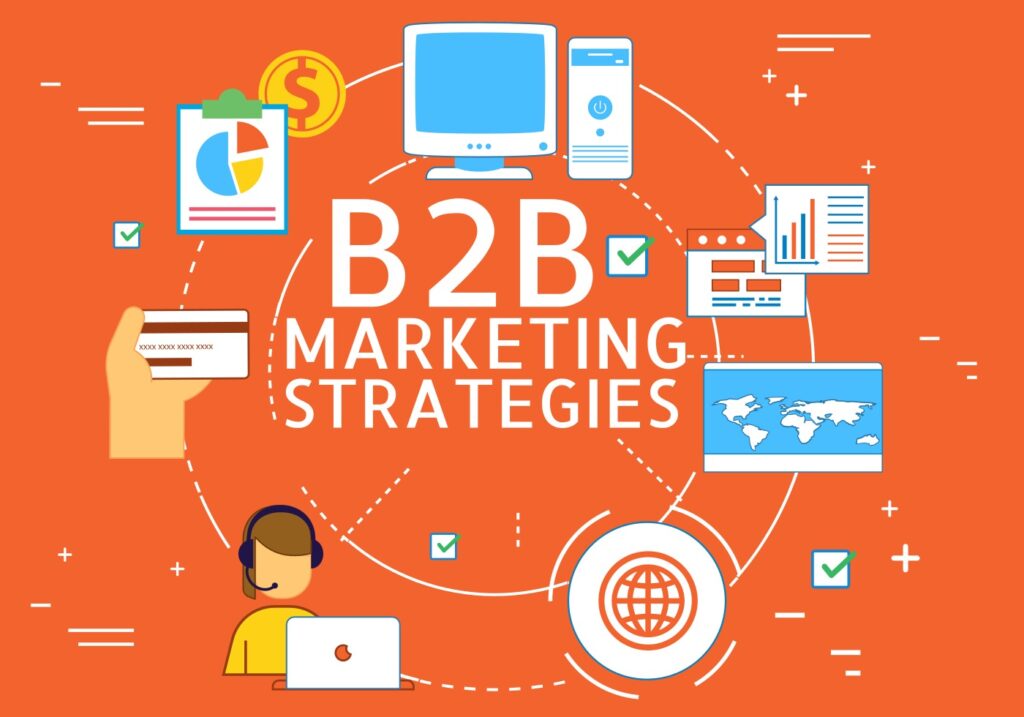B2B Digital Marketing Strategies for 2025:
How to Reach and Convert Business Customers

In the evolving digital landscape, B2B marketing requires a strategic, data-driven approach to effectively engage business audiences. With increasing competition, longer sales cycles, and complex decision-making processes, businesses must implement robust marketing strategies to generate leads, nurture relationships, and drive conversions.
What is B2B Marketing?
B2B (business-to-business) marketing refers to the strategies businesses use to market their products and services to other companies rather than individual consumers. The primary objective is to showcase value, establish brand credibility, and convert businesses into loyal customers. Unlike B2C marketing, which relies on emotions and quick purchase decisions, B2B marketing is more logic-driven, requiring detailed information, trust-building, and personalized engagement.
Key Differences Between B2B and B2C Marketing
| Feature | B2B Marketing | B2C Marketing |
|---|---|---|
| Goal | ROI, efficiency, expertise | Deals, entertainment, and experience |
| Purchase Motivation | Driven by logic and financial incentives | Driven by emotion and impulse |
| Sales Cycle | Longer, requires multiple decision-makers | Shorter, often a direct purchase decision |
| Purchase Process | Requires detailed evaluation and comparisons | Quick decision-making with fewer barriers |
| Relationship Building | Focuses on long-term partnerships | More transactional and brand-loyalty-based |
Understanding the B2B Customer Journey
The B2B buyer’s journey typically follows three key stages:
Awareness Stage: The prospect identifies a problem and seeks potential solutions.
Consideration Stage: The prospect researches available solutions and compares vendors.
Decision Stage: The prospect is ready to make a purchase and selects the best option.
Identifying Where Potential Customers Are in the Journey
To effectively move prospects through the sales funnel, businesses must first identify where each potential customer is in the buyer’s journey. This can be achieved through:
Website Analytics: Track user behavior, page visits, and time spent on specific content.
Lead Scoring: Assign scores based on interactions, such as downloads, email opens, or webinar attendance.
CRM Data & Customer Engagement: Monitor how prospects engage with emails, sales teams, and marketing content.
Social Listening: Analyze discussions and inquiries on social media and industry forums.
Leading Potential Customers Through the Journey
Once identified, businesses should tailor their marketing strategies accordingly to guide prospects from awareness to conversion.
Awareness Stage Strategies:
Create educational content (blogs, whitepapers, webinars) addressing common industry challenges.
Utilize SEO and social media to increase visibility.
Run targeted paid campaigns to attract the right audience.
Consideration Stage Strategies:
Offer in-depth product comparisons and case studies.
Develop personalized email nurture sequences with relevant information.
Provide free trials, demos, and product walkthroughs.
Decision Stage Strategies:
Address final objections through personalized consultations.
Provide compelling incentives, such as limited-time offers or exclusive features.
Ensure a seamless purchasing experience with an optimized checkout or contract process.
Understanding this journey helps marketers craft relevant content and personalized experiences that guide prospects toward conversion.
Effective B2B Marketing Strategies
1. Defining Your Target Audience
A deep understanding of your ideal customer profile (ICP) and buyer personas is essential. Consider these factors:
Firmographics: Company size, industry, revenue, location
Demographics: Age, education, job title of decision-makers
Pain Points & Needs: Challenges they seek to solve
Leverage data analytics, CRM insights, and direct customer feedback to refine your audience segmentation.
2. Developing a B2B Marketing Mix
A successful B2B marketing strategy incorporates the 4 Ps of Marketing:
Product: Clearly define the value proposition of your offering.
Price: Implement a competitive pricing strategy aligned with market demand.
Place: Choose the right distribution channels.
Promotion: Utilize various digital marketing tactics to reach and engage prospects.
3. Building a Comprehensive B2B Marketing Plan
A structured marketing plan should outline:
Business objectives and KPIs
Target market and positioning strategy
Budget allocation
Marketing channels and tactics
Key B2B Digital Marketing Tactics
1. Content Marketing
Content marketing is the backbone of B2B digital marketing. Businesses seek valuable, informative, and data-backed content to make informed decisions. Effective content formats include:
Blog articles and whitepapers
Case studies and testimonials
Ebooks and research reports
Webinars and video tutorials
2. Search Engine Optimization (SEO)
SEO ensures your brand is discoverable when potential customers search for solutions. Key SEO tactics include:
Keyword research tailored for B2B queries
High-quality, authoritative content
On-page and technical SEO optimization
Backlink-building strategies
3. Email Marketing & Lead Nurturing
Email remains one of the most effective B2B channels for nurturing leads. Best practices include:
Personalized email sequences based on buyer stage
Newsletters with industry insights and product updates
Automated drip campaigns for lead engagement
4. Social Media Marketing
Social media platforms, particularly LinkedIn, are crucial for B2B networking and brand awareness. Effective strategies include:
Sharing industry insights and thought leadership content
Running targeted LinkedIn ads
Engaging in relevant discussions and communities
5. Paid Advertising & PPC Campaigns
Paid search and social media ads help businesses reach a broader audience. B2B PPC strategies include:
Google Ads for targeted keyword bidding
LinkedIn Ads for precise audience targeting
Retargeting campaigns to re-engage past visitors
6. Influencer & Partner Marketing
B2B influencers and brand advocates help build trust and credibility. Strategies include:
Partnering with industry thought leaders
Collaborating with niche influencers
Encouraging employees to share company content
7. Marketing Automation & AI Integration
Automation streamlines lead generation and nurturing processes. AI-powered tools enhance:
Chatbots for real-time customer interactions
Predictive analytics for personalized recommendations
AI-driven content creation for scalability
Final Thoughts
B2B digital marketing in 2025 is about data-driven strategies, personalization, and multi-channel engagement. Businesses that invest in high-quality content, SEO, social media, and AI-driven marketing will stay ahead in an increasingly competitive landscape. By focusing on value-driven interactions and leveraging emerging trends, companies can establish themselves as industry leaders and drive long-term success.

